Technical SEO is optimizing a website’s build to improve its organic performance. It creates a strong base that helps search engines find and rank content.
Think of your website as a library. Technical SEO is like placing books on shelves with clear labels – that’s your URL structure. It’s also about setting up signs for easy navigation, which are your internal links. Plus, creating a welcoming atmosphere reflects your site speed.
When the library is organized and inviting, more visitors can find the books they need, which means users can discover your content. Librarians, or search engine bots, can also sort and recommend books by indexing and ranking them.
Table of Contents
- Why is Technical SEO Important?
- Understanding Technical SEO Elements
- How Search Engines Work
- Key Technical SEO Practices
- Technical SEO Tools
- Frequently Asked Questions
Why is Technical SEO Important?
Technical SEO is essential for most websites. It forms the foundation for search engine visibility and performance. Yes, the content you publish is crucial. But without proper technical optimization, search engines may struggle to discover, index, and rank your content.
Technical SEO matters for several reasons:
First, it ensures that search engines can crawl and index your content. By optimizing elements like your website’s structure and navigation, you help search engine bots move through your site. This accessibility is vital for your content to get noticed and indexed.
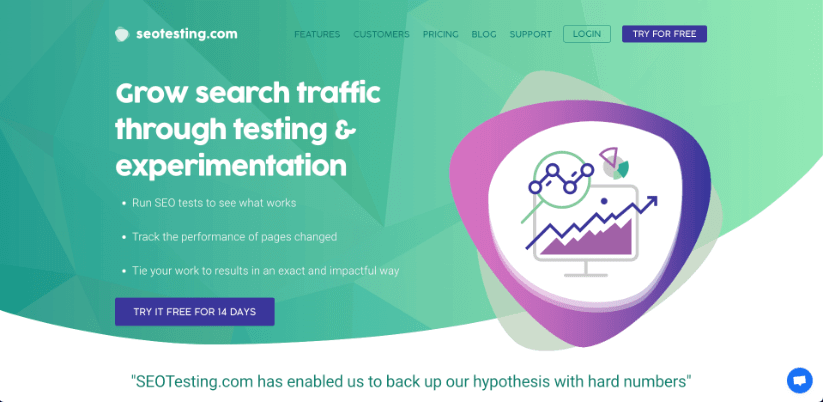
Our website has excellent architecture.
Second, technical SEO directly affects your search engine rankings. Website speed and mobile responsiveness are ranking factors. Also, having a well-structured HTML markup helps search engines assess your site’s quality. A well-optimized website is more likely to rank higher in search results.
Finally, technical SEO contributes to a great user experience. Working on technical aspects like:
- Speeding up page load times
- Improving URLs
Will enhance user satisfaction. A better user experience leads to lower bounce rates and higher engagement. This can indirectly boost your website’s search performance.
In the end, technical SEO is the cornerstone of effective SEO strategies. It ensures your content is not only high-quality but also accessible. This appeals to both search engine bots and, more importantly, users.
Understanding Technical SEO Elements
All websites have the same elements when it comes to technical SEO. These traits are the same whether the site is:
- A brochure website.
- A news website.
- An ecommerce website.
Or any other website, for that matter.
Site Speed
A well-optimized website will load quickly across all devices and network conditions.
Fast-loading pages enhance the user experience on your website and are favored by search engines. This will lead to higher rankings. Especially if the other websites you are competing with aren’t as fast.
Passing Core Web Vitals is a ranking factor. So, ensuring your website passes these tests is crucial.
Crawlability
This should be a no-brainer, but websites should be crawlable by search engines.
If a search engine bot cannot crawl your website effectively, you will find issues with your page’s ranking on the SERPs.
Robots.txt files and meta robots tags should be properly configured. This will help guide search engine bots on which pages to:
- Crawl & index
- Leave alone
Only some pages on your website should be crawled—especially admin pages and pages containing customer data.
Link Equity
Websites that are well-optimized technically do everything they can to preserve link equity.
First, the website uses internal links that guide users and bots to relevant content. This improves site navigation, helps distribute link equity, and keeps users on the site longer.
Secondly, the website is entirely free of broken links and redirect chains. This ensures a seamless user experience and efficient search engine crawling.
Pro Tip: You can use ScreamingFrog to find broken links and redirect chains.
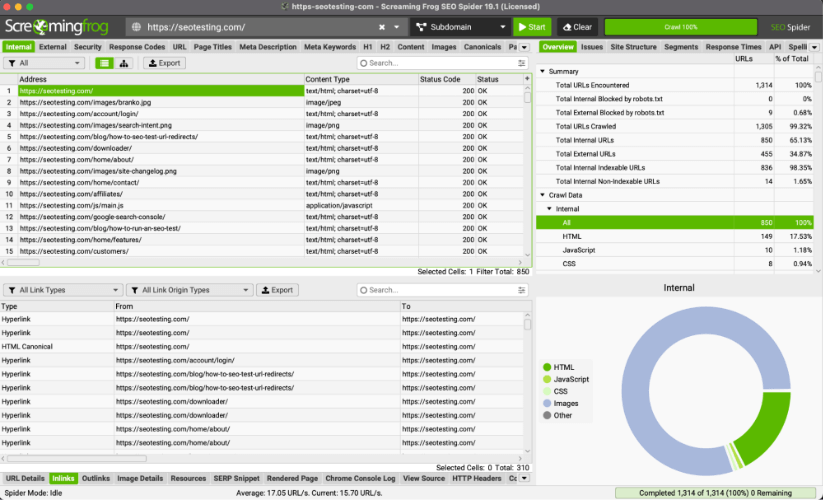
Mobile-Responsiveness
All websites must be functional on mobile devices. Mobile responsiveness is a crucial factor in user experience and rankings.
On July 5th, 2024, Google stopped indexing websites that don’t work on mobile devices.
As of September 2024, mobile device users contribute to 63.38% of all website traffic. This should indicate how crucial it is for your website to be mobile-responsive.
Security
All websites must ensure that they use the secure HTTPS protocol.
This ensures your website has adequate data encryption in place. It also boosts the trust that users have when they use your website. This trust is essential when handling financial data. A good example is on ecommerce sites, where card information is being entered.
Google also confirmed that HTTPS use is a ranking factor. We don’t know Google’s weight on this, but we can make educated guesses. For example, this is probably more important when dealing with YMYL (Your Money Your Life) sites.
Structured Data
Schema markup will provide additional context about your website’s content. This will enable search engines to show rich snippets within the SERPs when showing your website. These rich snippets help to improve the click-through rate and bring more traffic to your site overall.
How Search Engines Work
The next section of this article will dive into how search engines work. All search engines work by completing four tasks:
- Crawling
- Rendering
- Indexing
- Ranking
While different search engines will weigh factors differently and may even complete the above steps differently, these four steps are crucial to their operation. The general process is very similar.
Crawling
Crawling refers to the process of search engine bots examining your site. The goal of crawling is to gather more information about web pages. This includes:
- Their content
- Their structure
- Other relevant information
Search engines use this data to index and rank content, making your content visible on the SERPs.
Search engines use bots to navigate the vast amount of web pages online. These bots start by visiting well-known web pages. From there, they follow links to ‘discover’ new pages. Once complete, they can render, index, and rank the pages.
Rendering
Rendering is how search engines process your website’s content and structure. This helps them decide your ranking on search engine results pages (SERPs). Rendering involves two main steps: crawling and indexing.
During crawling, search engine bots browse the web, visit pages, and collect HTML data. However, not all content is visible in the HTML code. This is where rendering comes in.
Rendering does more than just read HTML. It processes dynamic elements on modern websites that might not appear in the basic HTML. These include:
- Content loaded with JavaScript
- AJAX
- Other scripting languages
- The page’s CSS stylesheet
Search engine bots try to mimic user experience. They run JavaScript and collect the fully rendered content. They then use this content to build an index—a database of information about the web page.
To get the best SEO results, ensure search engine bots can quickly render your website. This involves using techniques like:
- Server-side rendering (SSR)
- Pre-rendering for sites that use a lot of JavaScript
Adding metadata—like meta tags and descriptions—helps search engines understand your content. Correctly handling canonical tags and managing redirects also prevent duplicate content issues.
Indexing
Indexing is when search engines collect, organize, and store information about web pages. This helps them show pages quickly when someone searches.
Once a web crawler visits a page and reads its content, it adds that information to the search engine’s index.
The index is a big database with information about websites everywhere. Search engines use this database to answer user queries quickly. They find relevant pages in the index and show them in search results.
During indexing, search engines take important information from the web pages they visit. This includes:
- Content
- Metadata
- Images
- Links
They store this information in an organized way. This helps them quickly match user searches with relevant pages.
Ranking
Search engine ranking is the final step after crawling, rendering, and indexing. Search engines decide the order in which web pages appear in the SERPs. The goal is to show users the most relevant and valuable content based on their search queries.

Ranking depends on complex algorithms that assess factors to determine a web page’s relevance and authority.
One fundamental aspect is keyword relevance. This means how well your content matches the words and phrases users search for. Pages with high keyword relevance tend to rank better.
Keyword relevance alone is not enough. Search engines also consider:
- The quality of your website
- The authority of your website
Backlinks from reputable, authoritative, and relevant sites strongly indicate a page’s credibility. The more high-quality backlinks a page has, the more likely it is to rank higher.
User experience on your website plays a huge role in ranking. Search engines heavily favor pages that:
- Load quickly
- Are mobile-friendly
- Provide a smooth browsing experience
Engaging and valuable content that keeps users on your site longer also signals to search engines that your website deserves a higher ranking.
Personalization is another aspect of ranking. Search engines consider the user’s:
- Location
- Search history
- Preferences
They tailor search results to give the best experience possible. This means the same query may yield different results for different users.
Remember, we do not know the exact weight Google and other search engines place on different factors for different queries. You may need to focus more on authoritative and relevant backlinks for one query. For another, you may need to ensure your user experience is excellent. Success comes with time in the industry, learning the algorithms, and continuous improvement.
Key Technical SEO Practices
In this next section, we will discuss practices that are essential to technical SEO.
These practices are divided into different categories. Some tasks ensure your site architecture is in a good place, others improve your site’s crawlability, and some focus on optimizing your site’s performance.
However, all the below tasks will work together to ensure that Google and other search engines have no complaints about your website’s technical performance.
Site Architecture
We will examine some tasks to help you create a better site architecture. This is one of the fundamental parts of technical SEO.
XML Sitemaps
An XML sitemap is a file that gives search engines a structured list of all the URLs on your website. It’s a tool that helps crawlers understand the organization of your website’s content, ensuring they can discover and index all your important pages effectively.
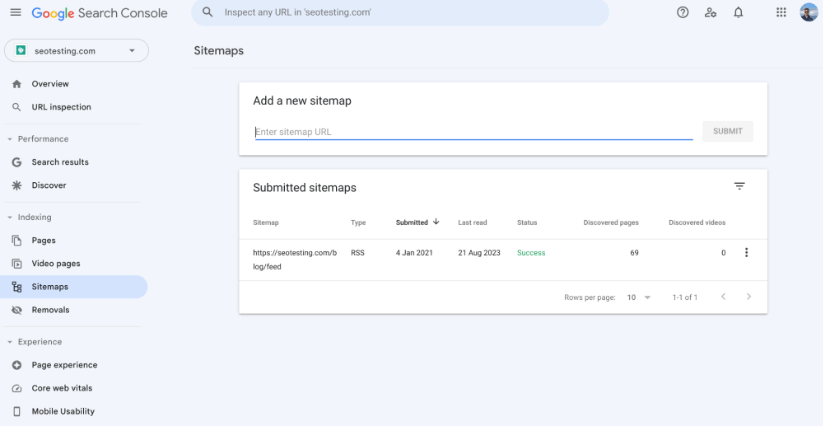
Ensuring you have an XML sitemap on your website and that it is validated is essential for technical SEO. This is because it helps to get your content crawled in several ways:
An XML sitemap on your site provides search engine bots with a centralized list of URLs you want crawled and indexed. This will help you ensure that all essential pages are included in the search engine and indexed. Because of that, search engine results pages are created.
This will include pages like:
- Blog posts
- Product listing pages
- Product display pages
- Feature pages
- Customer testimonials
You can use your sitemap to set the importance of each page and how often it changes. Remember, search engines might not follow these settings strictly. But by doing this, you help crawlers understand which pages are most important and how frequently they are updated.
Your sitemap can help highlight essential or newly updated pages. This can guide search engine bots to these pages and help get them crawled faster. If you don’t have a sitemap, you would be relying on crawlers to find your content manually. This requires them to crawl internal links, which is much slower.
For large sites, explore the prospect of having multiple sitemaps. This will help manage the crawl budget more effectively. This is not an issue for smaller sites but will become more important as a site grows.
Breadcrumb Navigation
Implementing breadcrumb navigation improves site architecture by organizing content more clearly. It helps users understand their location within a website’s hierarchy, making navigating easier and reducing confusion. Breadcrumbs also guide users back to broader categories without extra effort, enhancing the overall user experience.
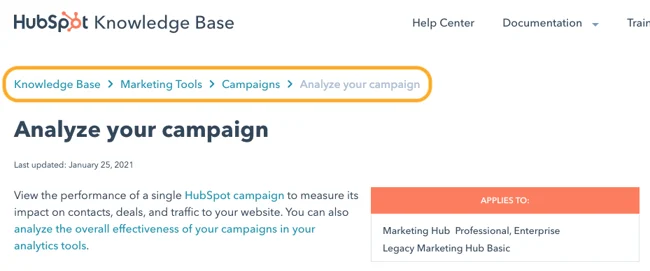
To add breadcrumb navigation, start by defining your website’s structure. Use HTML to mark up the navigation paths. Include links to each page in the hierarchy. Add schema markup to make breadcrumbs readable for search engines. Place the breadcrumb trail near the top of each page. Make sure it accurately reflects the site’s structure.
Breadcrumbs improve technical SEO by creating clear pathways for search engines to crawl. They connect related pages and strengthen internal linking. This helps distribute link authority across the site. It also improves the way pages appear in search results. Breadcrumbs make your site more user-friendly and SEO-friendly at the same time.
Site Structure
The structure of your website will play a crucial role in determining how search engine bots navigate its content.
A well-organized site structure will help facilitate efficient crawling and enhance user experience.

Here is an example of an ecommerce website with a good site structure. The most important pages are easily accessible from the navigation bar. This passes on as much link equity as possible and ensures crawlers can find them easily.
When pages are organized into simple categories, it becomes easier for crawlers to follow links and systematically index content. This hierarchical arrangement ensures that crucial pages are closer to the homepage, which increases their chances of being discovered and crawled quickly.
Adding internal links to your website helps search engine crawlers navigate your site more easily. Well-placed and relevant internal links help distribute link equity across pages, allowing crawlers to uncover more content than they could without internal links being present.
Orphan pages (pages with no links pointing to them) should be avoided. They present a considerable challenge for crawlers. A robust site structure, with proper internal linking, avoids this.
The structure of your website serves as a framework that shapes how search engines crawl your content. Webmasters and marketers can positively influence how search engines crawl their content. This can be done through:
- Implementing a clear site hierarchy
- Adding relevant internal links
- Optimizing crawl budget
Crawlability
Next, we shall analyze tasks that help make your website more crawlable. Or, to put it in Layman’s terms, tasks that will better allow search engine bots to see the content on your site.
Robots.txt
Your robots.txt file has a lot of control over how search engines crawl your website. This document sits at your site’s core and gives search engine crawlers guidelines. It tells them which pages they can crawl and which they should leave alone.
But this does not guarantee that your pages won’t be crawled through other means. Some search engines may still find pages that are excluded from crawling. They may do this through internal links on your site, for example.
If your robots.txt file contains errors or overly strict rules, it may prevent search engines from crawling important content. This can hurt your website’s performance in the search engine results pages (SERPs). It’s essential to regularly check your robots.txt file to ensure all the rules work correctly.
Fixing Crawl Errors
Crawl errors occur when search engines cannot access a page or resource on your website. These errors can prevent important content from being indexed and negatively impact SEO.
Log into Google Search Console and review the Coverage or Crawl Errors report. Common errors include 404 (page not found), 500 (server issues), or blocked resources.

For 404 errors, redirect broken or outdated URLs to relevant pages using 301 redirects. If the original page no longer has an appropriate replacement, consider redirecting to the homepage or a category page. For server errors, work with your hosting provider to address stability issues or optimize server performance. Also, check your robots.txt file and meta tags to ensure no crucial pages are accidentally blocked.
Revisit Google Search Console regularly to confirm fixes and monitor for new errors.
Canonical Tags
Canonical tags tell search engines which version of a page is preferred when duplicate or similar content exists. This helps consolidate ranking signals and prevents search engines from wasting crawl budget on duplicate pages.
To set up canonical tags, add the <link rel=”canonical” href=”URL”> tag to the <head> section of your HTML. Ensure that each page’s canonical tag points to the correct URL, whether it’s itself (self-referencing) or another page. For example, if you have multiple URLs for the same product due to tracking parameters, the canonical tag should point to the clean, primary version of the URL.
Regularly audit your site to ensure canonical tags remain accurate. Use tools like Screaming Frog or Sitebulb to identify missing, conflicting, or incorrect canonical tags. Monitoring prevents search engines from indexing undesired duplicate versions, improving crawl efficiency.
URL Structure
Your website’s URL structure directly impacts how search engines crawl your site. A well-organized and descriptive URL structure helps crawlers understand each page’s content more efficiently.
Clear and short URLs provide valuable context about:
- The topic of the page
- The page’s place within your site hierarchy
A URL like https://example.com/blog/head-topic-1 tells a search engine crawler that this page is an integral part of your blog and covers a key topic of your website.
Convoluted or nonsensical URLs can confuse crawlers as they navigate your site. For example, https://example.com/12642/test-category/test-page does not provide clear information. This confusion hinders crawlers’ ability to:
- Interpret the content
- Assess the page’s relevance and importance
A clean URL structure should:
- Exclude unnecessary parameters
- Avoid symbols
This increases the chances of your pages being crawled effectively.
Additionally, your URL structure affects user experience and click-through rates. Even though this is not directly related to crawling, it’s essential. A concise and relevant URL is much more likely to attract clicks. This increased engagement can indirectly boost your website’s overall search engine ranking.
Fix Pagination Issues
Pagination is necessary for organizing content across multiple pages, such as blogs, e-commerce sites, or forums. However, pagination can confuse crawlers and lead to indexing issues if not handled properly.
Use the rel=”next” and rel=”prev” tags in the <head> section of paginated pages to indicate the sequence to search engines. This helps them understand the content flow and index it correctly. Create a “view-all” page where feasible, providing a single location for crawlers to access the entire content.
Additionally, ensure that pagination does not block crawlers with robots.txt or meta noindex tags. Use clear navigation links between paginated pages to enhance discoverability. Review your paginated content regularly to ensure proper functionality and indexing.
Manage Orphan Pages
Orphan pages are web pages without any internal links pointing to them. These pages are problematic for search engines to discover, which means they might not get crawled or indexed.
Use tools like Google Analytics, Screaming Frog, or SEMrush to identify orphan pages. Look for pages that receive no traffic or are not linked to other parts of your website.
Once identified, integrate orphan pages into your internal linking structure. Link them from relevant pages, such as category pages or blog posts, to make them discoverable. If an orphan page is unnecessary or outdated, consider redirecting or removing it from your site.
Regular audits are key to managing orphan pages effectively and ensuring all valuable content remains accessible to search engines.
Indexation
Next, we will look at some tasks to help your pages become more indexable. This includes various technical tasks such as using meta tags, fixing issues with duplicate content, and working to optimize crawl budgets.
Control Indexation with Meta Tags
Use meta tags like noindex and nofollow to improve page indexation. These tags give search engines clear instructions about which pages to index or avoid.
A noindex tag prevents search engines from indexing specific pages. This is useful for pages like admin panels, duplicate content, or thank-you pages. These pages add no value to search results and can dilute your site’s relevance.
A nofollow tag prevents search engines from following links on a page. This prevents authority from passing to irrelevant or low-value pages, ensuring search engines focus on important content.
By controlling indexation with these tags, you streamline search engine crawls, improving the speed and effectiveness of indexing important pages.
Fix Duplicate Content & Keyword Cannibalization
Fix duplicate content and keyword cannibalization to help your pages get indexed faster.
Removing duplicate content prevents search engine confusion. This shows search engines the main version of your content.
Fixing keyword cannibalization is also important. Keyword cannibalization happens when multiple pages target the same keywords. By fixing this, you give clear signals to search engines about each page’s focus. This helps with efficient indexing and ranking, as search engines understand the purpose of each page.

An image shows the Keyword Cannibalization Report in SEOTesting. This report helps you find and fix keyword cannibalization issues on your website.
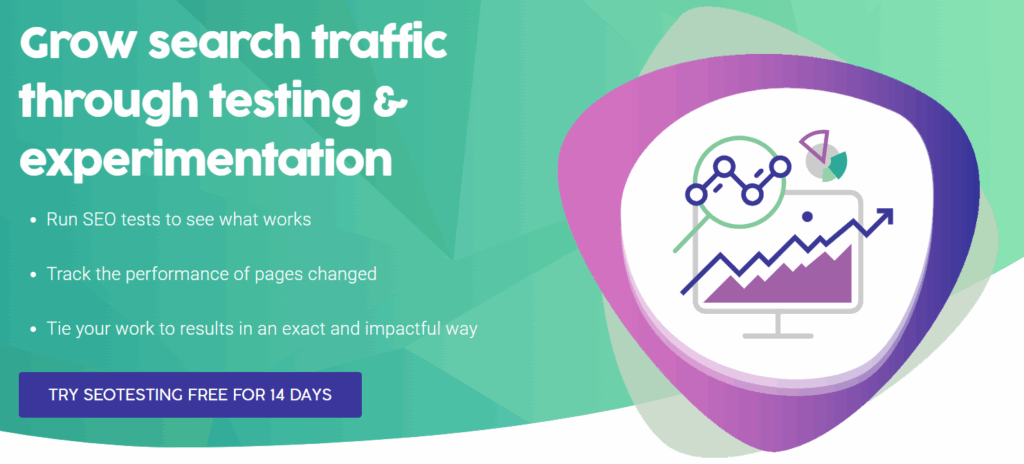
Optimizing metadata and adjusting internal links help with quick indexing. Correctly performing these actions guides search engines to the most important pages.
Also, combining similar content and avoiding keyword cannibalization focuses authority on one page. This increases the page’s authority. Search engines will prioritize and rank that page higher in search results.
Optimize Crawl Budgets
Optimizing your crawl budget ensures search engines focus on your most important pages. A crawl budget is the number of pages a search engine crawls on your site within a given time.
Large websites can waste their crawl budget on low-value or duplicate pages. Use robots.txt to block unimportant pages from being crawled, saving the budget for high-priority content.
Fixing broken links and improving site structure also helps. Broken links waste crawl time, while a clear structure helps search engines navigate your site efficiently.
With a well-optimized crawl budget, search engines find and index your most valuable pages faster. This improves your site’s indexability and boosts its visibility in search results.
Core Web Vitals
Moving on to website speed. This is always an important topic in technical SEO. And Core Web Vitals are a direct part of that. There are three parts of Core Web Vitals that you need to consider:
- Largest Contentful Paint
- First Input Delay
- Cumulative Layout Shift
Improve Largest Contentful Paint
Improving Largest Contentful Paint (LCP) enhances your site’s Core Web Vitals. LCP measures how quickly the largest visible content loads on a page.
Slow LCP frustrates users and increases bounce rates. To improve it, optimize your server’s response times. A faster server delivers content quicker. A content delivery network (CDN) can reduce delays by serving content from locations closer to users.
Compress and optimize images and videos. Large media files slow down loading times. To boost performance, use modern formats like WebP for images.
Improving LCP creates a better user experience. Faster-loading content keeps users engaged and satisfied.
Enhance First Input Delay
Enhancing the First Input Delay (FID) ensures a smoother user interaction. FID measures the time it takes for a page to respond to the first user action, like clicking a button or typing in a field.
To improve FID, minimize JavaScript execution times. Heavy JavaScript files delay interactivity. Break up large tasks into smaller chunks using code splitting. This prevents blocking the main thread.
Use browser caching for third-party scripts. Cached scripts load faster and reduce delays. Also, unnecessary third-party scripts that slow down interactivity should be removed.
With better FID, users experience a fast and responsive site. This leads to higher engagement and satisfaction.
Fix Cumulative Layout Shift
Fixing Cumulative Layout Shift (CLS) improves visual stability on your site. CLS measures unexpected shifts in content while a page loads.
To fix CLS, set size attributes for images and videos. This reserves the correct space before they load. Use CSS to define size dimensions for embeds and ads. This prevents content from moving unexpectedly.
Avoid dynamically injecting new content above existing elements. If necessary, use placeholders to prevent layout shifts. Preloading key fonts also reduces delays in text rendering, which can cause layout instability.
Fixing CLS creates a stable browsing experience. Users can interact with your site without frustration or errors.
Performance Optimization
You can do several tasks to improve your website’s overall performance. Consider compressing images, minifying your CSS and JavaScript, and utilizing content delivery networks. This section will discuss all of these tasks and more.
Compress Images
Compressing images improves website performance and boosts technical SEO. Large image files slow down page load times, frustrating users and search engines.
Use tools to reduce image file sizes without losing quality. Choose modern formats like WebP or AVIF. These formats maintain visual clarity while being much smaller.
Optimized images load faster and create a better user experience. Faster pages lead to lower bounce rates and better rankings in search results.
Minify CSS, JavaScript, and HTML Files
Minifying CSS, JavaScript, and HTML files improves site speed and SEO. These files often include unnecessary spaces, comments, and characters. Removing them reduces file sizes and improves load times.
Use UglifyJS, CSSNano, or online minifiers to streamline your code. Minified files load quicker, making your site more efficient for users and search engines.
Faster-loading pages improve user engagement and search engine crawl efficiency. This leads to better rankings and visibility.
Enable Browser Caching
Enabling browser caching reduces load times for returning visitors. Caching stores parts of your website, like images and scripts, on a user’s device.
When users revisit your site, cached resources load directly from their device. This reduces server requests and speeds up page load times.
Efficient caching improves user experience and helps search engines view your site as well-optimized. This can lead to higher rankings and better performance.
Optimize Server Response Times
Optimizing server response times ensures faster page loads and improved SEO. A slow server delays how quickly users and search engines access your site.
Use tools like GTmetrix or Pingdom to identify server bottlenecks. To reduce these delays, upgrade your hosting plan, optimize your database, and use faster server-side technologies.
Quick server response times make your site more efficient, improving user satisfaction and search engine rankings.
Use Content Delivery Networks
Content delivery networks (CDNs) improve website performance and global reach. CDNs store your site’s content across multiple servers worldwide.
When users access your site, the CDN serves content from the server closest to them. This reduces latency and speeds up load times.
CDNs enhance user experience and help search engines recognize your site as fast and reliable. Faster load times can lead to better rankings.
Implement Lazy Loading
Lazy loading for images and videos improves site speed and technical SEO. With lazy loading, media files load only when users scroll to them.
This reduces initial page load times and saves bandwidth. Visitors can access content faster, even on slower connections.
Search engines reward faster-loading sites. Implementing lazy loading helps both users and search engines experience your site efficiently.
Mobile-Friendliness
Along with optimizing your website’s performance, you must ensure it is mobile-friendly. Luckily, there is a list of things you can do here to improve your site’s mobile usability.
Responsive Web Design
Responsive web design ensures your site works well on all devices. It adjusts layouts, images, and content to fit different screen sizes.
A responsive site improves mobile usability by providing a seamless experience. Users won’t need to zoom or scroll sideways to view content.
Search engines heavily favor mobile-responsive websites, with Google going so far as to confirm that mobile-friendliness is a ranking factor. This has gone even further recently, with Google confirming that as of July 5, 2024, Google is not indexing sites that aren’t available on mobile devices.
Optimize Touch Points for Mobile
Optimizing touch elements improves usability on mobile devices. Small buttons or links make navigation difficult and frustrate users.
Ensure buttons, links, and interactive elements are large enough to tap easily. Space them apart to avoid accidental clicks.
Mobile-friendly touch elements create a better user experience, which helps reduce bounce rates and improves your site’s ranking in mobile search results. I cannot tell you how frustrating it is to use a website on my mobile phone and have difficulty clicking a button.
Minimize Pop-Ups and Intrusive Interstitials
Minimizing pop-ups and intrusive interstitials improves mobile-friendliness. These elements can block content and annoy users.
If pop-ups are necessary, use small banners or delay them until users engage with your site. Avoid full-screen pop-ups that interfere with navigation.
This also links back to optimizing touch points, as we discussed. If your website uses pop-ups, ensure it is easy for a user to click off these pop-ups on mobile devices. Having pop-ups that are difficult to click will cause many users to bounce off your website altogether.
Structured Data
Structured data is an integral part of technical SEO, although it’s important to note that it will not directly improve your organic traffic or rankings. Structured data helps you get rich snippets in Google’s SERPs. This can increase your click-through rate, meaning more organic traffic. So it helps, but indirectly.
Implement Schema Markup
Implementing schema markup improves your site’s mobile and desktop search visibility. Schema is a structured data format that helps search engines understand your content better.
Adding schema makes it easier for search engines to display rich results. These can include star ratings, FAQs, event details, or product information directly in search results.
Rich results enhance mobile user experiences by providing helpful information at a glance. A well-implemented schema boosts click-through rates and improves your site’s performance in search rankings.
Validate Structured Data
Validating schema with Google’s Rich Results Test ensures your markup works correctly. This tool checks your schema for errors and verifies that it supports rich results.
Run your site through the test to identify and fix issues. Correcting errors ensures your structured data is accurate and effective.
Validated schema improves your chances of appearing in rich results. This enhances your site’s visibility, especially on mobile, where concise and engaging results are crucial for user experience.
HTML Markup
HTML markup is another vital part of technical SEO, significantly impacting how easily crawlers can understand your website’s content. This section will cover using HTML5 semantic elements and utilizing Hreflang tags on your site.
Use HTML5 Semantic Elements
Using HTML5 semantic elements improves your site’s structure and accessibility. Semantic elements like <header>, <article>, and <footer> clearly define the purpose of each section of your page.
These elements help search engines understand your content better. A well-structured page makes it easier for search engines to crawl and index your site.
Semantic HTML also improves mobile usability. It ensures content displays correctly on smaller screens, creating a better user experience. Better structure leads to higher rankings and improved visibility.
Implement Hreflang
Implementing hreflang tags ensures search engines display the correct language version of your site to users. These tags tell search engines which version of your content is meant for different regions and languages.
Without hreflang tags, search engines might show the wrong version of your site, confusing users and increasing bounce rates.
Hreflang tags improve user experience, especially for mobile users searching in specific languages. They help search engines serve the right content, boosting your site’s performance in global search results.
HTTPS Implementation
How you implement HTTPS across your website also plays a role in its technical success. This section will cover fixing HTTP and HTTPS errors, using SSL certificates, redirecting from HTTP to HTTPS, and fixing issues with mixed content.
Fix HTTP & HTTPS Errors
Fix HTTP and HTTPS errors to ensure search engines index your pages correctly. When search engine bots find these errors, they struggle to access and understand your content. If a bot can’t access or understand your content, it can’t index it.
Addressing these issues improves indexing in several ways:
- Resolve HTTP errors like “404 Not Found”:
- Ensures your pages are accessible to users and search engines.
- It prevents search engines from seeing pages as missing content.
- It gives crawlers a clear path to index your content.
- Increases the chances of your pages being indexed and ranked.
- Transition from HTTP to HTTPS:
- Improves security and indexing.
- Search engines prioritize secure websites (HTTPS) over non-secure ones (HTTP).
- Google has confirmed this preference.
- Migrating to HTTPS enhances your site’s credibility.
- Improves its ability to be indexed and ranked.
- Ensure consistent HTTPS implementation and fix HTTPS-related errors:
- Prevents “mixed content” issues.
- Mixed content occurs when secure and non-secure elements load on the same page.
- Avoids security warnings.
- Enhances user experience.
Fixing HTTP and HTTPS errors removes barriers that block search engines from accessing and understanding your content. This proactive approach optimizes the indexing process, increases search results visibility, and enhances your site’s user experience.
Correctly Install SSL Certificates
Installing an SSL certificate secures your site and improves its technical SEO. SSL encrypts data exchanged between your site and users, protecting sensitive information like passwords and payment details.
A secure site builds trust with users and search engines. Search engines prioritize HTTPS sites in rankings because they value security.
Without SSL, your site will show as “Not Secure” in browsers, which can scare users away. An SSL certificate is a simple way to boost trust, improve SEO, and meet modern web standards.
Redirect HTTP to HTTPS
Redirecting HTTP to HTTPS ensures all traffic to your site is secure. After installing an SSL certificate, set up 301 redirects to guide visitors and search engines to the HTTPS version of your pages.
This step consolidates your site’s authority under the secure version. It prevents duplicate content issues that can arise when both HTTP and HTTPS versions exist.
Redirecting to HTTPS improves user trust and signals to search engines that your site prioritizes security. This enhances your rankings and strengthens your technical SEO.
Fix Mixed Content Issues
Fixing mixed content issues ensures a fully secure browsing experience. Mixed content happens when a secure HTTPS page loads insecure HTTP elements, like images or scripts.
Browsers often block or warn users about mixed content, creating a poor user experience. To fix this, update all links and resources to use HTTPS.
A fully secure site improves trust and eliminates browser warnings. It also signals to search engines that your site is fully optimized for security, positively impacting your technical SEO.
Site Errors
Site errors are an issue every SEO professional will face throughout their careers. These issues can be 404 errors, other server errors, or problems with internal and external links. This section will explore these in detail.
Fix 404 Errors
Fixing 404 errors improves your site’s user experience and technical SEO. A 404 error occurs when a page is not found, frustrating users and search engines.
Use tools like Screaming Frog to crawl your site and identify pages returning 404 errors. Fix them by setting up 301 redirects to relevant pages or updating internal links.
Resolving 404 errors ensures search engines can crawl your site efficiently. This reduces wasted crawl budget and improves your site’s overall health and rankings.
Fix Broken Links
Broken links harm user experience and make your site more complicated to navigate. Internal broken links disrupt site structure, while broken external links waste link equity.
Crawl your site with Screaming Frog to find and fix broken links. Update internal links to point to live pages. For external links, either remove them or replace them with updated URLs.
Fixing broken links helps search engines navigate your site more effectively. A clean link structure improves crawl efficiency and boosts your technical SEO.
Audit Server Error Responses
Server errors like 500, 502, or 503 codes signal issues with your hosting or server configuration. These errors prevent search engines from accessing your site, impacting your rankings.
Use Screaming Frog to identify pages with server error responses. Work with your hosting provider to fix the underlying issues. This may include optimizing server settings or upgrading resources.
A site free from server errors ensures smooth crawling and indexing by search engines. This strengthens your technical SEO and improves user reliability.
Fix DNS Issues
DNS issues can make your site inaccessible to users and search engines. Problems like slow DNS resolution or incorrect configurations hurt site performance and rankings.
Monitor your DNS setup regularly using tools like Screaming Frog and DNS checkers. Fix errors by updating DNS records or switching to a faster DNS provider.
Resolving DNS issues ensures your site is always available and responsive. Reliable accessibility improves crawlability and positively impacts your technical SEO.
Redirects
Redirects are crucial to technical SEO. They redirect search engine crawlers from broken, outdated, or irrelevant content. Having your redirects correctly set up and monitored is vital, and this is the same whether you are using temporary or permanent redirects.
Audit Redirects
Examining your website’s redirects improves how quickly search engines index your content. It also enhances your website’s overall performance. Redirects guide users and search engines to different pages when needed. If not managed well, they slow the indexing process or stop it altogether. By performing a “redirect audit,” you enhance indexing in several meaningful ways.
First, addressing excessive redirects helps search engines index your website more effectively. Sometimes, search engines encounter multiple redirects, which slows down indexing. By finding and removing unnecessary redirects, you:
- Help search engines access your content quickly
- Give your pages a better chance of being indexed and ranked promptly
Completing a redirect audit also allows you to tackle redirect chains. Redirect chains happen when one redirect leads to another, then another, and so on. They confuse search engines and consume too much of their time. When a search engine bot takes too long to index a page, it moves on and does not index that page. An audit lets you find and fix these chains, enabling search engines to reach your content without issues.
Finally, such an audit helps search engines accurately understand your website. When redirects are well-structured, search engines better interpret the importance of your content. With a clear understanding of your content’s importance, your important pages have a better chance of being indexed quickly.
Avoid Redirect Chains and Loops
Redirect chains and loops slow down your site and hurt its technical SEO. A redirect chain happens when one URL redirects to another and then another before reaching the final destination. Redirect loops occur when URLs redirect back to themselves, creating an endless cycle.
Use tools like Screaming Frog to identify redirect chains and loops on your site. Fix chains by updating the initial URL to point directly to the final destination. Resolve loops by reviewing your redirect rules and ensuring they reach a valid target.
Eliminating redirect chains and loops improves site speed and crawl efficiency. Search engines can better navigate your site, improving rankings and a smoother user experience.
Technical SEO Tools
Before we round off this article, I want to discuss tools that can help you improve your technical SEO. This section will cover Google’s tools, like GSC and other third-party tools.
Google Search Console (GSC)
Google Search Console is a free tool from Google that provides a direct view of your site’s search performance. It provides insights into your pages’ keyword rankings, impressions, clicks, and click-through rates.

The tool helps you monitor indexing and crawl errors, alerting you to pages that aren’t appearing in search results. Its Core Web Vitals report highlights user experience metrics like page load time and interactivity.
Google Search Console also offers tools for submitting sitemaps, disavowing spammy links, and troubleshooting mobile usability issues.
Leveraging these features can ensure your site remains optimized and search-engine friendly.
Google Analytics (GA4)
Google Analytics (GA4) is Google’s web analytics tool. It focuses on user-centric metrics and event-based tracking. It tracks how users navigate your site, where they come from, and which actions they take, like form submissions or purchases.

GA4 uses AI-powered insights to predict user behavior and identify trends, unlike its predecessor (Universal Analytics). It’s also designed to work seamlessly across devices, giving you a holistic view of your audience.
For technical SEO, GA4 can reveal bottlenecks in the user journey, such as slow-loading pages or high exit rates on specific URLs. This data helps you optimize your site for user experience and search rankings.
Google PageSpeed Insights
Google PageSpeed Insights is essential for optimizing your site’s speed, directly impacting SEO and user experience.

The tool provides a detailed analysis of your site’s performance on mobile and desktop devices, offering metrics like Largest Contentful Paint (LCP), First Input Delay (FID), and Cumulative Layout Shift (CLS). These metrics influence search rankings and are part of Google’s Core Web Vitals.
The tool also offers recommendations for improving load times, such as compressing images, reducing server response times, or leveraging browser caching. Faster-loading sites rank better and keep visitors engaged, reducing bounce rates and improving conversions.
Google Lighthouse
Google Lighthouse is a comprehensive auditing tool integrated into Chrome’s Developer Tools. It evaluates your site across multiple categories:
- Performance
- Accessibility
- SEO
- Best practices
Lighthouse provides actionable insights, such as fixing unused JavaScript, optimizing images, or improving font loading times. The SEO audit checks for essential elements like meta tags, alt text for images, and proper HTTP status codes.
Following Lighthouse’s recommendations, you can enhance your site’s technical foundation, ensure it’s optimized for search engines, and provide a smooth user experience.
Screaming Frog SEO Spider
Screaming Frog SEO Spider is a desktop-based crawler that scans your site’s entire structure to identify technical SEO issues. It can detect broken links, redirect chains, duplicate content, missing metadata, and oversized files.
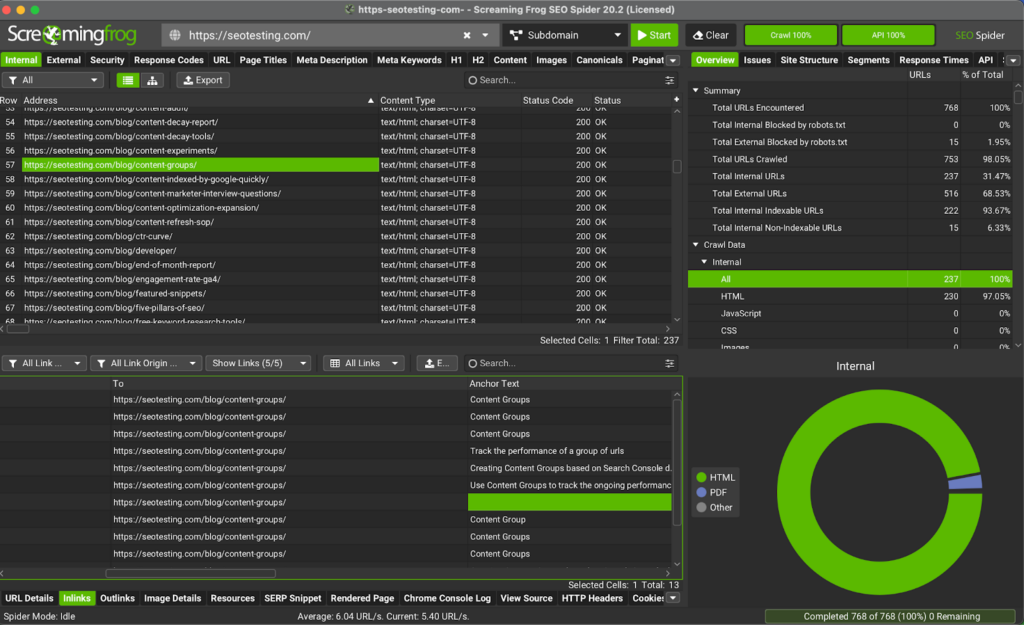
The tool allows you to analyze sitemaps and robots.txt files to ensure proper search engine crawling and indexing. With integrations for Google Analytics and Google Search Console, it gives you a detailed view of how technical factors affect your site’s performance.
Screaming Frog is ideal for small audits and large-scale site reviews. It saves time and provides invaluable insights for SEO improvements.
Siteliner
Siteliner specializes in identifying duplicate content, which can hurt your rankings. It scans your site for pages with repeated text, thin content, and broken links. The tool also evaluates your site’s internal link structure, helping you identify opportunities to strengthen connections between pages.

Siteliner provides a detailed report with a “Duplicate Content” score, highlighting problem areas that need attention. Addressing these issues improves the quality and uniqueness of your site’s content, making it more attractive to search engines and users.
W3C Validator
The W3C Validator checks the quality of your HTML and CSS code against web standards set by the World Wide Web Consortium.
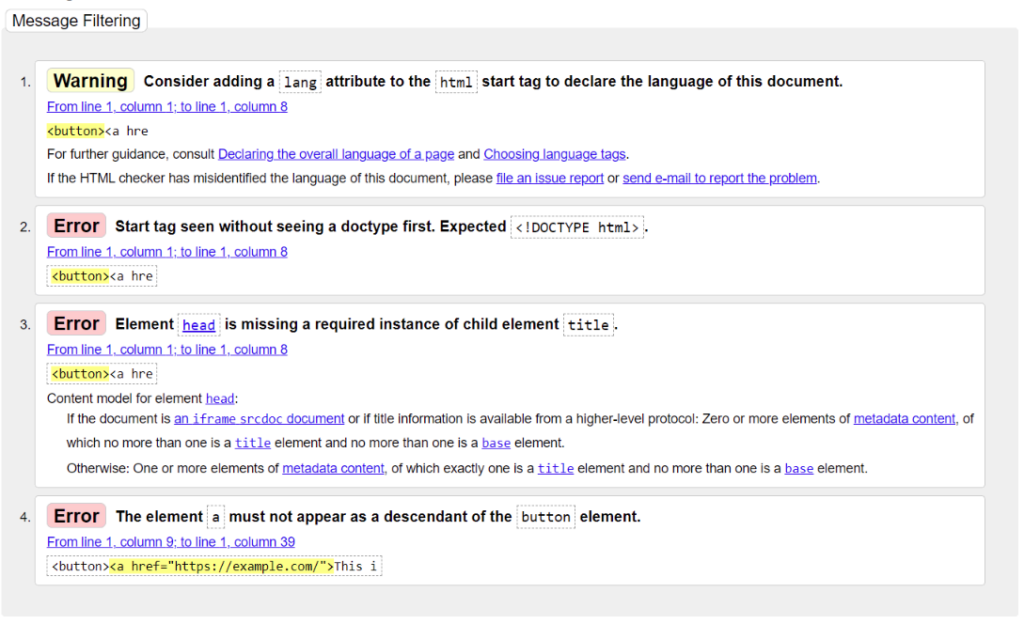
Clean and compliant code ensures your site renders correctly across browsers and devices, reducing the risk of errors that can frustrate users or impact your SEO performance. The validator identifies issues like unclosed tags, deprecated elements, or improper nesting and gives clear instructions for fixing them.
Maintaining error-free code enhances user experience and improves crawlability, positively impacting your search rankings.
Frequently Asked Questions
To wrap up this article, we are going to answer some of the most searched questions surrounding technical SEO.
What is the difference between technical SEO and on-page SEO?
Technical SEO focuses on optimizing your website’s infrastructure to ensure it’s easily crawlable, indexable, and performs well for users and search engines.
This includes elements like:
- Site speed
- Mobile-friendliness
- Structured data
On-page SEO, on the other hand, is all about optimizing the content and HTML source code of individual pages. Think:
- Keywords
- Meta tags
- Internal linking
While technical SEO ensures your site’s foundation is solid, on-page SEO refines the elements that directly connect with your audience.
Is technical SEO classed as off-page SEO?
No. Technical SEO is not considered off-page SEO. Off-page SEO refers to activities that happen outside of your website, like:
- Link building
- Social media engagement
- Brand mentions
Technical SEO is strictly about optimizing your website’s backend and infrastructure to make it as search-engine-friendly as possible.
Does technical SEO require coding?
While you don’t need to be an expert in coding, some aspects of technical SEO benefit from a basic understanding of HTML, CSS, and JavaScript. Tasks like editing robots.txt files, adding structured data, or fixing crawl eros might involve light coding. However, many tools and platforms make it easier for non-coders to handle technical SEO without diving into code.
Is page speed technical SEO?
Page speed is a critical component of technical SEO. It directly impacts user experience and search engine rankings, especially since Google considers speed part of its Core Web Vitals metrics. Optimizing page speed often involves technical elements like image compression, minimizing HTTP requests, and leveraging browser caching.
However, page speed is not the only factor when it comes to technical SEO.
Why does technical SEO matter?
Technical SEO lays the groundwork for your website’s success in search engines. Without a technically optimized site, search engines might struggle to crawl or index your content, no matter how great it is. A solid technical SEO strategy improves site performance, boosts search visibility, and ensures a seamless experience for your users—all of which are key for ranking higher in search results.
How do you conduct a technical SEO site audit?
Conducting a technical SEO audit involves several steps:
- Crawl your site using tools like Screaming Frog or Sitebulb to identify issues like broken links, duplicate content, or missing metadata.
- Check site speed and Core Web Vitals using Google PageSpeed Insights or Lighthouse.
- Review mobile-friendliness with Google’s Mobile-Friendly Test.
- Inspect your robots.txt file and XML sitemap to ensure search engines can effectively crawl and index your site.
- Fix security issues, ensuring your site uses HTTPS and has no vulnerabilities.
- Analyze structured data with Google’s Rich Results Test to verify your markup is correctly implemented.
What is included in technical SEO?
Technical SEO includes several foundational elements that improve how your site is crawled, indexed, and rendered by search engines. These include:
- Site architecture: Optimizing your URL structure, internal linking, and navigation.
- Crawling and indexing: Managing robots.txt files, XML sitemaps, and canonical tags.
- Page performance: Improving site speed, Core Web Vitals, and mobile responsiveness.
- Security: Ensuring your site uses HTTPS and protecting against security vulnerabilities.
- Structured data: Implementing schema markup to help search engines better understand your content.
- Error management: Identifying and fixing issues like broken links or duplicate content.
Technical SEO covers these areas and ensures your website is optimized for search engines and users.
Conclusion
Technical SEO is the backbone of a successful website. By addressing site performance, ensuring mobile-friendliness, optimizing crawlability, and implementing structured data, you create a user-friendly and search engine-ready site. Each improvement builds on the last, forming a strong foundation for organic growth.
Ready to implement these strategies? Start by auditing your site, prioritizing key fixes, and leveraging tools like Google Search Console and Screaming Frog. A technically sound site will improve rankings, traffic, and user engagement.
Want to supercharge your use of Google Search Console and take your SEO to the next level by implementing SEO testing into your routine? Give SEOTesting a try. We’re running a 14-day free trial, with no credit card required to sign up. Give the tool a try today, and let us know what you think!


